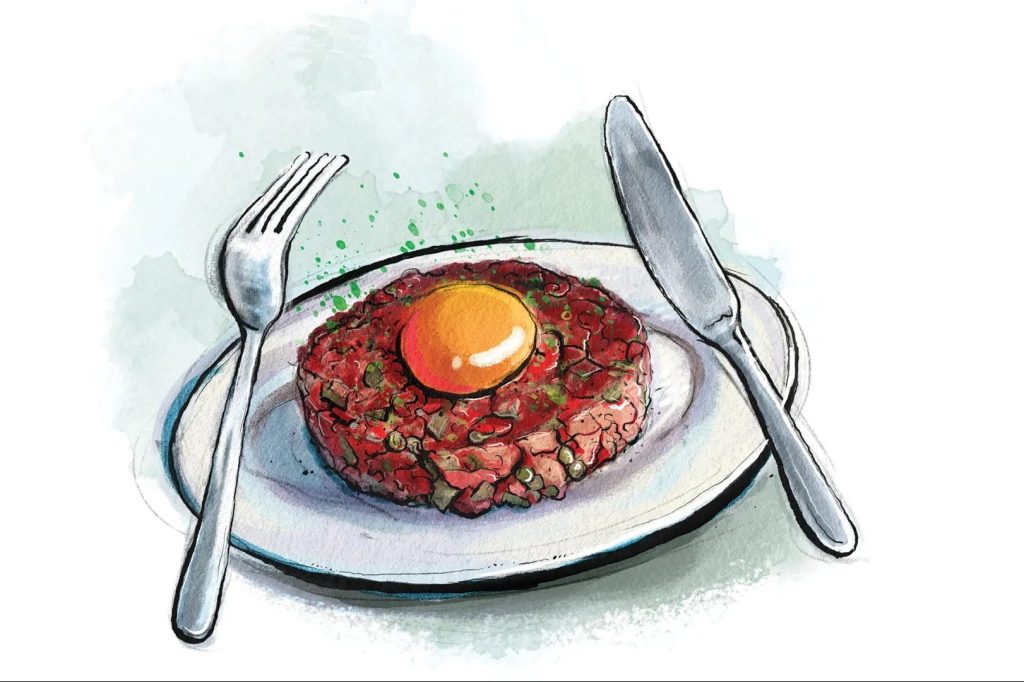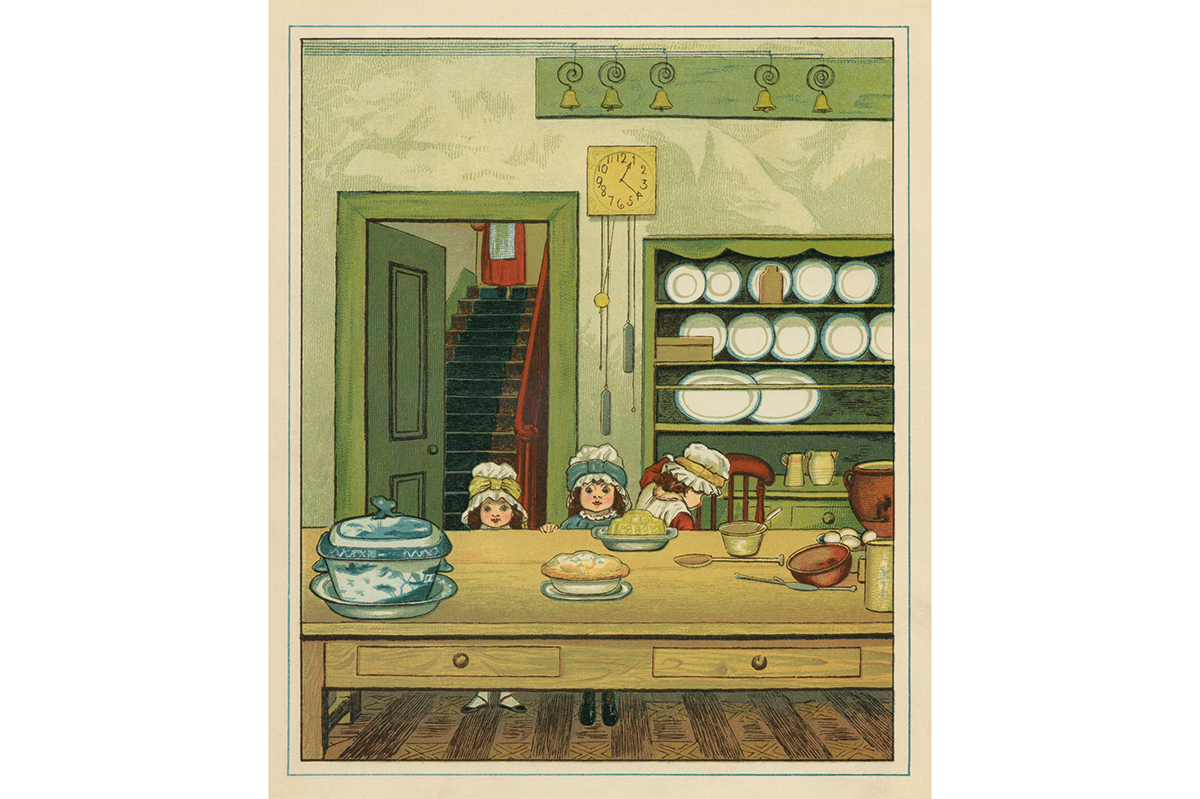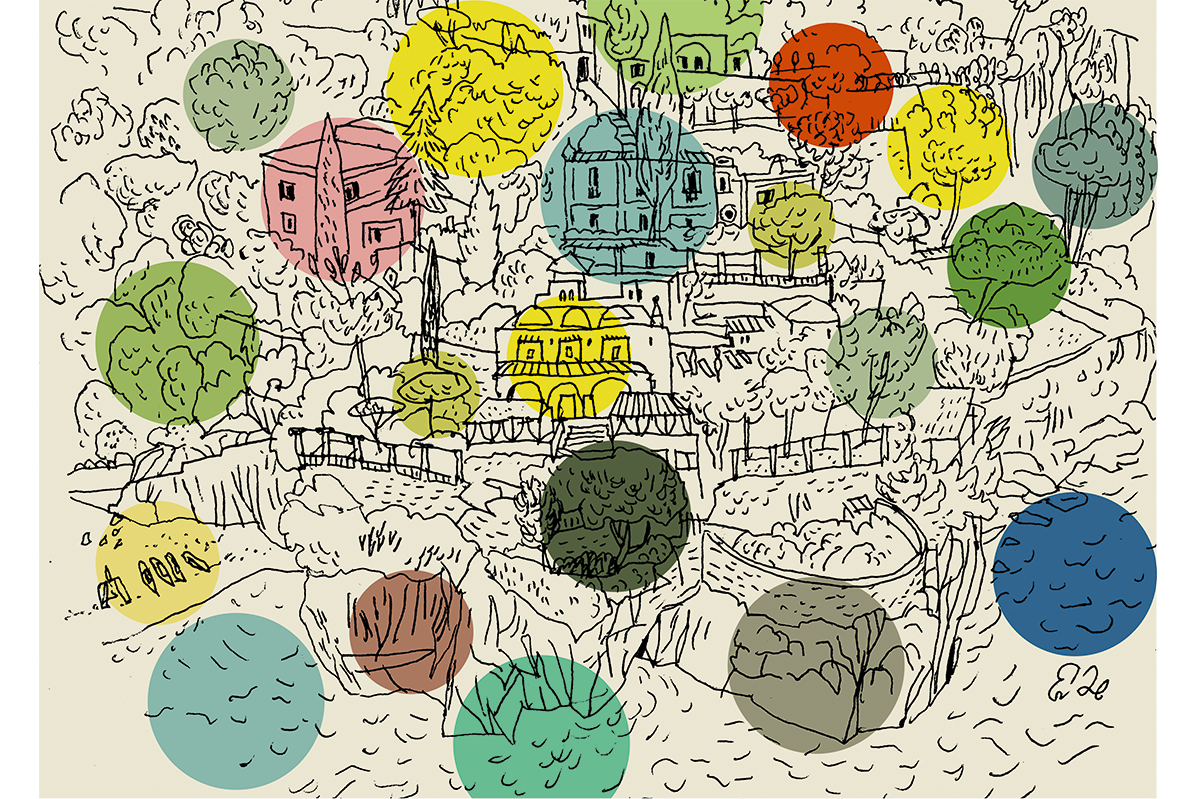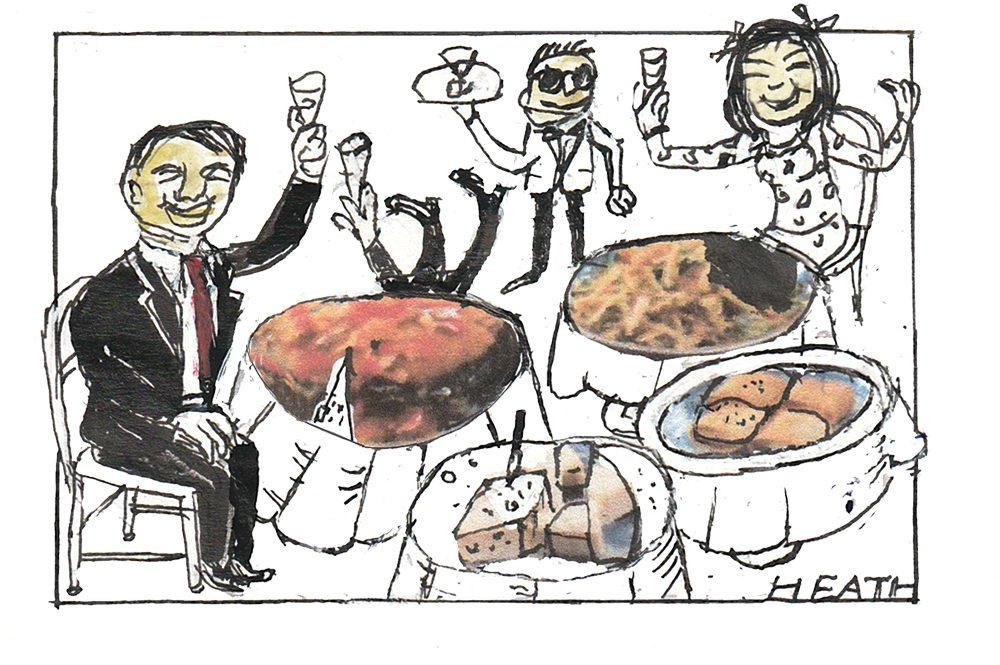Whenever I think of steak tartare, I can’t help but remember a heartbreaking passage in Nigel Slater’s memoir Toast. Slater, working at a French restaurant in a Midlands hotel as a young man, is desperate to try the steak Diane. He books a table there for himself and a date. In a moment of madness, he accidentally orders the steak tartare instead. Expecting a rich, cream-spiked, butter-fried, brandy-flambéed steak, he is first surprised, and then horrified when a waiter begins chopping up raw meat alongside him. “I felt cold, then hot, then cold again. The little egg yolks seemed to be looking up at me, laughing. Then everyone was laughing.” He goes outside and faints.
There’s actually something terribly romantic, intimate even, about steak tartare prepared for two
Perhaps this is not the best introduction to a dish that I’m suggesting you make, but it’s stuck with me. For those who already love steak tartare, it needs no sales pitch: it is the chicest, most delicious way of eating beef fillet, a treat in every sense. It is mellow and punchy, compact and expansive. But to those who don’t, it can be a hard sell. It is, after all, chopped raw meat served with a raw egg yolk. Although I note that Slater has his own recipe for the French classic, so I assume he at least has been won over.
While I’m not suggesting you serve it as a starter for your next dinner party, if you’re at all tartare-curious, then I’d urge you to give it a go. And if you’re used to eating it only at a restaurant, then it’s high time you sharpened your best knife. I’m not sure I can quite justify this, but I think there’s actually something terribly romantic, intimate even, about steak tartare prepared for two and eaten at home. Like oysters or lobster, steak tartare requires just the right amount of sophistication of palate, like minds — and acceptance of mess.
We often take “tartare” to mean “chopped, raw meat or fish,” but in fact, the tartare is referring not to the protein, but to the other bits and bobs mixed into it. A “sauce tartare” was simply a strong intensifier or compound condiment used to flavor whatever it was accompanying. Like the tangy tartar sauce we enjoy with fried fish — full of capers and gherkins and herbs — steak tartare (or originally, steak à la tartare) just meant steak with a tartar sauce: i.e. a sauce full of aggressively flavored elements.
So what are those elements? Well, look at everything you have in your cupboards that might be deemed “punchy” and you’re pretty much there: mustard, Worcestershire sauce, capers, shallots, cornichons, Tabasco… it has it all. Sometimes it’s served with those elements neatly and separately set out, like a painter’s palette. But I prefer them mixed together, with the exception of the egg yolk, which should sit in a divot in the center of the dressed meat, ready for the lucky diner to break it open.
Restaurant-wise, there’s a certain amount of showmanship with steak tartare. It is usually made table-side, with the waiter appearing at your elbow wheeling a cocktail cart of salty condiments and mouth-puckering pickles. But at home, the unhurried, careful chopping of each element, slowly creating little piles of varying shades, becomes quite a meditative act. The meat should be cut by hand so that it is diced as small as possible, without actually being minced. The beef, of course, has to be the best quality you can find, and as fresh as it comes. Go for fillet, which is lean and tender, and make sure it’s bright in color and firm in texture; placing it in the freezer for fifteen minutes before you prepare it makes it far easier to cut.
When it comes to what to eat it with, Melba toast and French bread are commonly used; Nigella likes it with pumpernickel. I go full brasserie and serve it with a plate of salty fries. Above all, steak tartare is a dish of contrasts: the mellow meat and rich egg yolk sitting against the spiky, invigorating flavorings, spice, salt, vinegar, umami. So why not add the contrast of hot crispy fries and tender cold beef to the mix?
Serves 2
- 1/2 lb fillet steak
- 1 tbsp capers, drained and chopped
- 2 small shallots, peeled and finely chopped
- 3 cornichons, finely chopped
- 1 tbsp flat leaf parsley, finely chopped
- 1 tbsp olive oil — 4 dashes of Tabasco
- 1 tsp Worcestershire sauce
- Salt and pepper, to season
- 2 egg yolks
- Place two plates in the freezer while you prepare the ingredients. Trim meat of all fat and sinew and dice finely by hand
- In a bowl, stir together all the ingredients apart from the egg yolks, using a fork. Season generously
- Divide the mixture into two, and form it into a round shape on each of the cold plates; you can use a large pastry cutter if that’s helpful. Use the back of a spoon to create a divot in the center of each round, and tip an egg yolk into each one. Serve immediately
This article was originally published in The Spectator’s UK magazine. Subscribe to the World edition here.


























Leave a Reply